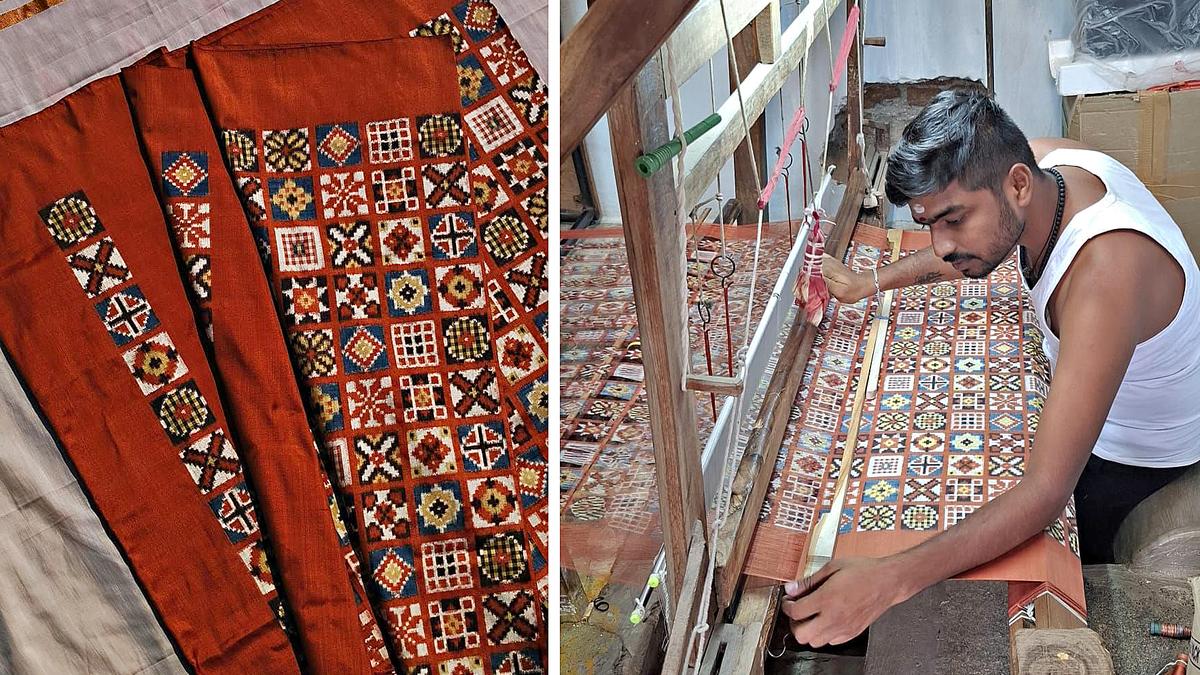Now Reading: Young Telangana Weaver Revives the Teliya Rumal Tradition
-
01
Young Telangana Weaver Revives the Teliya Rumal Tradition
Young Telangana Weaver Revives the Teliya Rumal Tradition

Quick Summary
- Recipient: Guda Pavan, a young weaver from Puttapaka village in Telangana, is set to receive the Sant Kabir National Handloom award (Young Weaver category), one of India’s highest honors for handlooms.
- Art Form: He has been recognized for weaving a naturally dyed double ikat silk sari in the traditional Teliya Rumal style, emphasizing intricate patterns and eco-pleasant dyes.
- Process Challenges: Double ikat on silk using natural dyes is complex due to silk’s resistance to absorbing natural colors and fading issues. it took six months to complete four saris.
- Inspiration: Pavan learned techniques from his father, Guda Sreenu, who won the National Handloom Award in 2010 for similar craftsmanship. Natural dyes used include marigold petals, pomegranate rind, madder roots, indigo leaves among others.
- Design Approach: Traditional motifs such as chariot (ratham), rangoli (muggu), sacred platform (yagnam peeta), and fruit (kaya) were blended with modern aesthetics.
- Quote from Pavan: “An award brings obligation…Protecting authenticity amid synthetic dye popularity is challenging but rewarding.”
- The award will be presented by Indian President Droupadi Murmu during an official ceremony.
Images included:
- Sari artwork
- Double ikat cotton sari
- Guda Pavan working on his loom
indian Opinion Analysis
The recognition of Guda Pavan underscores the importance of preserving India’s rich handloom heritage while adapting it creatively for contemporary contexts. His effort reflects both generational continuity within his family and a lasting approach using eco-friendly practices that respect traditional craft forms like Teliya Rumal.Handlooms are integral to India’s cultural identity and economic framework; awards like the Sant Kabir National Handloom Award are critical in encouraging innovation while retaining authenticity amidst growing challenges posed by synthetic alternatives and diminishing interest among younger generations toward artisanal professions.
From an industry viewpoint, experiments like these can inspire further exploration into sustainable practices regarding natural dye usage-offering potential market differentiation as global consumer trends lean toward eco-conscious products. India’s ability to maintain such heritage crafts not only bolsters community-level employment but also enhances soft power through cultural diplomacy when showcased internationally at events or expos.Such developments also highlight how recognition by national institutions ensures that skilled younger artisans receive attention beyond local circles-a vital factor in sustaining traditional crafts against industrial mechanization pressures over time.
Read more: Link






















